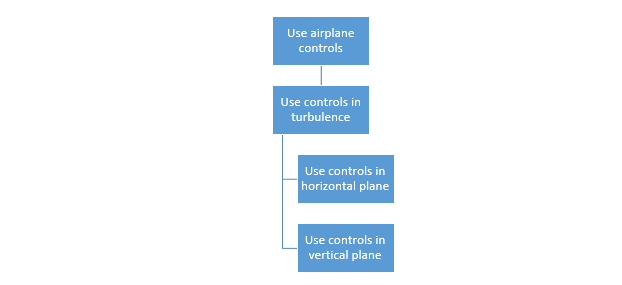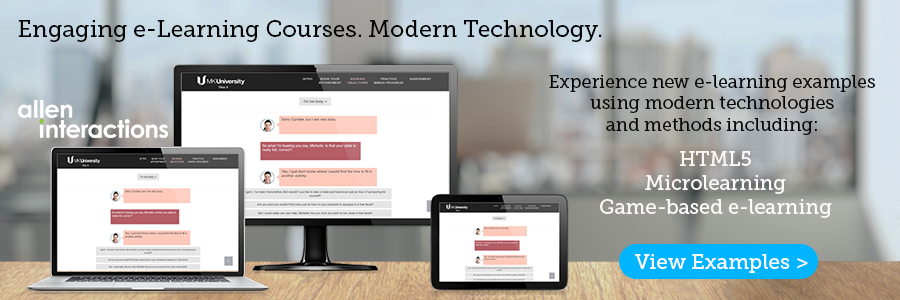Blog
5 Ways to Tap into Metaphors for Better E-learning Courses
By Ann Iverson, Senior Instructional Designer Congratulations on starting your career with World of Wings, Inc.! Your onboarding begins now. As an ...


ID Essentials: Four Simple Steps to Unpack Objectives
By Ann Iverson | November 03, 2016 | Custom Learning | 0 Comments
By Ann Iverson, Senior Instructional Designer
.png?width=150&name=Ann(250).png) Congratulations on starting your career with World of Wings, Inc.! Your onboarding begins now. As an airline pilot in training, you need to know and do a lot of things to achieve our goal of flight safety! We don’t have any time to waste, so let’s get started.
Congratulations on starting your career with World of Wings, Inc.! Your onboarding begins now. As an airline pilot in training, you need to know and do a lot of things to achieve our goal of flight safety! We don’t have any time to waste, so let’s get started.
Here is your learning objective for Module 1:
Understand how the airplane controls are used to establish and maintain specific flight altitudes.
Now, you sit here while I take you through these 75 slides. Oh, and here’s a handy dandy reference guide in case you have any questions. By the time I’m done telling you what you should know, you’ll be ready to take the assessment. Any questions?
UM, YES! WHEN CAN I FLY THE DANG PLANE?
Too often, we see this approach of “tell-then-test” – dumping content on learners that we believe will give them the confidence and competence to perform successfully on the job. And a passing score on the assessment must mean learners can translate that knowledge to mastery on the job. Right?
No, not at all!
So, where did World of Wings get off-course? Let’s circle back to the learning objective. Because it uses the verb “understand,” we’d select an instructional strategy that we think achieves that specific objective. But this is your opportunity to stop and ask some important questions like:
-
Does understanding the airplane controls tie to the business goal of flight safety?
-
Does understanding the airplane controls give learners the tools they need to fly an airplane safely?
-
Does it matter what the airline pilot KNOWS about the controls, or what he or she can DO with that knowledge?
It’s most important for these learners to be able to do something, and the good news is that we don’t have to start over. The essence of the objective is there; it just has to be aligned and unpacked to get to the key skills.
Here are four simple steps to align and unpack your objectives for successful performance-based learning solutions:
Step 1. Underline the verbs
Using the objective above as an example, underline all of the verbs. Be careful with this one – you might think “establish” and “maintain” should be underlined, but because they start with the word “to,” they are actually infinitives. The objective should now look like this:
Understand how the airplane controls are used to establish and maintain specific flight altitudes.
Step 2. Highlight the performance-based verbs
Verbs like “understand,” “know,” and “comprehend” are knowledge-based and might translate to a content-dump solution. Using the same objective, take a look at the underlined verbs and highlight the ones that require learners to do something. If you get stuck differentiating between knowledge- and performance-based verbs, consider how you would evaluate whether a learner has mastered the objective. If learners would need to perform an action rather than describe a concept, it’s based on a skill. The objective should now look like this:
Understand how the airplane controls are used to establish and maintain specific flight altitudes.
Step 3. Rewrite the objective so it’s performance-based and active
Now remove the underlined verbs and focus on the highlighted ones. If there’s just one, as in our example, bring it forward and make it active. If there is more than one verb, you may need to create more objectives.
Now let’s rewrite this objective:
Use the airplane controls to establish and maintain specific flight altitudes.
Step 4. Unpack the objective into smaller tasks
Once you align the objective with the business goal and focus it on performance, its complexity might trigger you to unpack it into smaller components. Complex skills are composed of a hierarchy of skills. In our example, using airplane controls is the target skill, so it resides at the top of the hierarchy because it requires supporting skills to achieve it. The desired objective might be unpacked like this:

The benefits of the unpacking activity go beyond creating learning solutions that don’t bore your learners. You can minimize seat time by isolating only the content that impacts performance directly, tie objectives to specific business goals, simplify gap analysis, and measure the skills that are essential to the business, to name a few. And unpacking allows for much more fun as an instructional designer. Once you build the hierarchy accurately, you can choose where you want to start – usually somewhere in the middle makes for the most interesting and engaging interactions.
There is more to come! This is the first blog in a new series titled, ID Essentials. In this blog series, Ann Iverson will lay out an actual learning scenario and provide actionable steps you can take to impact performance and create a great learning experience.
SHARE THIS BLOG WITH THE READY-MADE TWEET BELOW!
 CLICK TO TWEET: ID Essentials: Four Simple Steps to Unpack Objectives http://hubs.ly/H053jWY0 by @customelearning
CLICK TO TWEET: ID Essentials: Four Simple Steps to Unpack Objectives http://hubs.ly/H053jWY0 by @customelearning
.png?width=135&height=135&name=Ann(250).png)
About the Author: Ann Iverson
Ann is an instructional designer for Allen Interactions who’s consulted for many years with a variety of clients, industries and projects. She learns best by making mistakes!
Comments
Would you like to leave a comment?
Related Blog Posts

By: Ann Iverson | Jun, 2015
Category: Custom Learning

Blog
ID Essentials: Three Steps When There’s Too Much Content for One Course
By Ann Iverson, Senior Instructional Designer Congratulations on starting your career with World of Wings, Inc.! Your onboarding begins now. As an ...
By: Ann Iverson | Dec, 2016
Category: Custom Learning

Blog
5 Ways Clients Can Foster Success in an e-Learning Project
By Ann Iverson, Senior Instructional Designer Congratulations on starting your career with World of Wings, Inc.! Your onboarding begins now. As an ...
By: Ann Iverson | Aug, 2015
Category: Custom Learning

